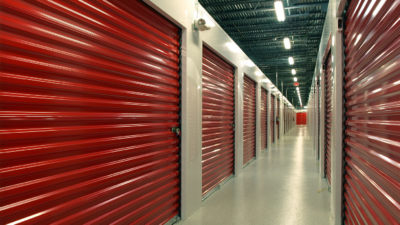Economists aren’t looking at just strong holiday sales numbers anymore. For the last several years, what happens after the holiday season has received just as much scrutiny.
Last year’s holiday sales numbers were the strongest since 2011. Early indicators for the 2018 holiday season project a robust gain once again this year, with a 4.3-4.8% sales increase and online sales topping $110 billion. To reduce the pressures of moving so much product over the short holiday period, online retailers have made efforts to extend the holiday shopping season, marketing an earlier start.
When analyzing post-holiday return activity, The Wall Street Journal reported that in January and February of 2016 alone, returned and overstocked items totaled $554 billion, with that amount growing at about 7.5% each year. And, with continued growth in holiday sales, January through March are the busiest months for reverse logistics, or the return of merchandise from its final consumer destination. About 13% of sold items, or $90 billion, will be returned through the end of February.
A holistic look at the supply chain leaves unanswered questions about what to do with returned items. What is the most cost effective way of managing returns? What is the most space effective way of not letting a mountain of returns gum up the efficiency of the distribution facility? How does the company efficiently process returned goods to minimize their impact of eroding holiday profits?
Senior Vice President Gregory Healy leads Colliers’ Supply Chain and Logistics consulting practice, and this year he’s turning his attention to the impact of reverse logistics on corporate users.
“It’s the big elephant in the room every year when it comes to this season. These returns represent a huge expense for companies when it comes to e-commerce. Every return cuts into already slim profits, especially for e-commerce transactions where transportation costs are high and ever-increasing.”
E-commerce consumers seek, and have come to expect, free shipping and free returns. These increasing higher expectations of free shipping have created a challenge, as companies are scrambling to keep redefine how they process returns to mitigate the impact on profits.
“On the outbound alone, shipping costs are already estimated to run about 50% of supply chain costs, and the last 25% of those costs are typically associated with the last mile, or the cost from the hub distribution center to the end consumer. With returns, companies are basically paying that transportation cost again — and more — to reintroduce that product back into the supply chain,” Healy says.
“The cost and influx of returns jams up distribution centers. The peak holiday season is focused on delivering outbound product with holiday sales, and to accept returns slows down operations and is incredibly labor intensive. It’s a big issue,” adds Healy.
So, what can logistics leaders do to minimize the impact of returns?
Recent Reverse Logistics Solutions
A reverse logistics report from the U.S. Postal Service states that “products bought at brick-and-mortar stores are returned around 9% of the time. The return rate for online purchases is nearly three times higher at 25-30%, and totals between $113 billion and $132 billion in the U.S. annually.”
Not only is the return rate higher for e-commerce businesses, but they also cost more. A recent report on reverse logistics in Supply Chain Quarterly noted that costs associated with processing returns are as much as 8-15% of a company’s top line.
A retail innovation designed to mitigate this challenge includes encouraging consumers to take their returns to brick-and-mortar locations. Nordstrom is trying Nordstrom Local, a physical space without inventory where customers can pick up and try on their online purchases without the straight-to-consumer shipping costs.
But this approach brings additional considerations. E-commerce companies will need to locate and pay for more space and will need to hire staff for those spaces. With historically-low unemployment rates, staffing could prove to be challenging.
As Amazon continues to grow, an ironic problem the e-commerce giant has encountered is its lack of brick-and-mortar locations for returns. The reverse logistics of returns reduce its profits since customers can’t return product to a store. Competitors like Walmart and Target have leveraged this to their advantage, as their vast network of stores provide a convenient alternative for omnichannel distribution and in-store returns of online purchases — an edge because of their vast network of storefronts to manage online returns.
Amazon now offers return drop-off locations in urban areas, and an expanding partnership with Kohl’s to encourage consumers to physically return products rather than take advantage of their generous and expensive free return shipping. A mutually beneficial relationship, Kohl’s has seen an uptick in sales because the program brings additional foot traffic into their stores when they make Amazon returns, and Kohl’s frequently offers in-store coupons to customers when processing returns.
“Unlike shopping center parking lots which are designed to support the holiday traffic, distribution centers do not have the luxury of building for the maximum capacity of the holidays. With the addition of returns in the DC, the space constraints can severely impact the efficiency of the operation, forcing e-commerce retailers to process shipments faster to free up space, or in the short-term look for off-site locations.” Healy notes, “space is valuable, and with a high level of returns comes an increased cost for both labor and space.”
Healy says that distribution centers and warehouses typically receive “a build-up of holiday product from August through December to support the season. It’s typical that once a distribution center is full, oftentimes bulk storage is moved offsite for the interim period. Coupled with customer returns, this influx creates a space issue. You can’t easily stack returns in the outbound processing area.”
Giving for Good
When returns are received at warehouse distribution centers, companies must determine if the product is re-sellable and can be placed back into inventory, or not re-sellable and needs to be disposed. In many cases, it is more time, labor and cost efficient to simply dispose of a returned good. Last year, CNN reported that 5 billion pounds of returned items would end up in a landfill.
According to Healy, a more effective and responsible approach, which some companies are already adopting, is to donate returned items. This eliminates the transportation cost of returning the goods, the labor cost of processing and restocking as well as the associated real estate costs for the facility. Moreover, for the company, there are tax incentives as companies can write off these donations.
Tax deductible, in-kind giving is one way to solve this complicated and expensive reverse logistics problem. Several organizations specialize in helping coordinate and streamline these donations, including Waste To Charity and Good360.
Good360 coordinates this product philanthropy approach by partnering with vetted nonprofits. Their website touts this statement, “Companies that donate to charity in this regard can help to streamline their reverse logistic approach, and they may also be eligible for tax reductions too. In fact, these deductions are often greater than the earnings a company might receive by liquidating these products.”
Healy says retailers could make a shift by offering a refund to customers — and then encouraging them to donate their unwanted items instead of sending those items back as free returns.
“The return process is so expensive; we’re finding more and more retailers saying, ‘don’t ship it back to us,’ — it’s too expensive to operate in this model. They could do something charitable instead. The holidays are usually a time of year for giving, and donating e-commerce mis-ships and mistakes would alleviate return pressure on the supply chain as well.”
Business leaders could make consumers happy by providing return options, do away with issues of extra transportation, labor and storage space costs and make large, sustainable, tax-deductible donations each year. It’s a win-win solution.
Gregory Healy, Senior Vice President, leads the U.S. Supply Chain and Logistics Consulting team. With over 20 years of global manufacturing and supply chain experience as both a senior executive in the corporate world, as well as owning a supply chain consulting practice and a third party logistics business, Gregory has real world experience that brings a unique perspective to the Colliers team.

 Colliers Insights Team
Colliers Insights Team
 Craig Hurvitz
Craig Hurvitz
 Aaron Jodka
Aaron Jodka